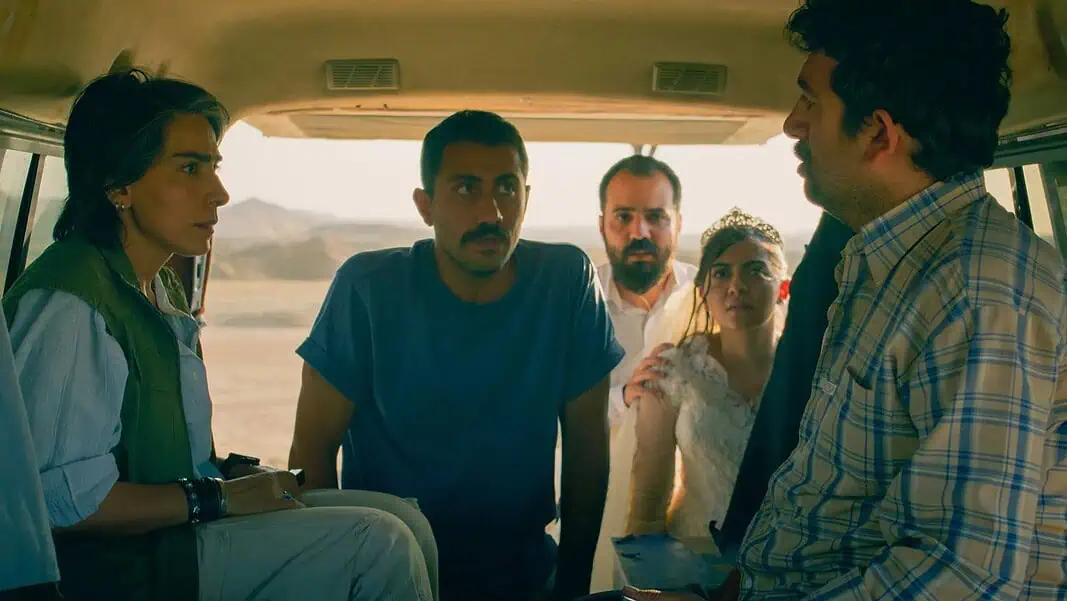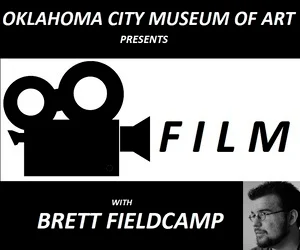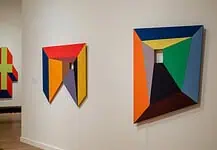OKLAHOMA CITY – Lately, I’ve been thinking a lot about the need for legitimately dangerous films.
After revisiting the 1960s and 70s works of Sydney Lumet and Alan Pukula, I’ve been struck by the need for films right now that similarly raise their voices about the powers and systems that be and that force their audiences to confront the realities of the present.
But while recent films like “Eddington” and “One Battle After Another” have made major waves with their willingness to be blunt, controversial, and even dire about the current political and governmental landscape, even those films weren’t forced to be made in secrecy and haven’t resulted in a genuine international incident.
But Palme d’Or-winning Iranian drama “It Was Just an Accident” was and has.
And when it opens at the Oklahoma City Museum of Art on November 7th, OKC audiences will get a chance to see why.
Perhaps the most pointed and controversial narrative feature yet from the monumentally acclaimed Jafar Panahi, “It Was Just an Accident” unfolds slowly and deliberately, seeming to openly revel in its refusal to give the viewer any clear indication or explanation of its events for at least the first twenty minutes.
And so, let me be clear with my final review up front: this is a remarkably well-crafted and powerfully acted film of worrying and timely relevance confronting the societal psychologies and daily realities of Iranian life. It’s tense, gripping, beautifully shot, and occasionally even funny, and it demands to be seen against the unfolding backdrop of recent global and domestic politics.
If you want to go into the film totally blind and as unprompted as Panahi clearly hopes that you’ll be, then take my word for it from that alone and grab a ticket when it hits OKCMOA.
But if you want to know more, or if you’re curious as to just how a small, single-day ensemble character study could be such a “dangerous” film, then read on.
“It Was Just an Accident” centers on Vahid, a working class man outside present day Tehran who falls into an immediate panic and rush upon a random chance encounter with a wealthy, visibly limping man and his family when their car breaks down.
Vahid stalks the limping man and follows him into the city the next day, where he knocks him out, ties him up, kidnaps him, and drives him into the desert, all with no explanation.
And it’s only once they’re alone in the desert, with Vahid digging a shallow grave in which to bury the limping man alive, does Panahi finally release the information.
Years ago, Vahid was arrested by the violent and repressive ruling regime of Iran. He was kept blindfolded, relentlessly tortured, told that he would be killed, compelled to name accomplices he didn’t have for crimes he didn’t commit, and psychologically broken over months.
And this limping man, blindfolded and begging for his life in a shallow grave, is the torturer.
Or at least Vahid thinks. But when he’s given just enough reason to doubt, the panic settles in again and sets off a dash throughout the city to find and gather other former political prisoners and subjects of the same torture to see if anyone can determine for sure if they have the right man or if they’ve accidentally kidnapped an innocent father.
Panahi’s film is an open indictment of the horrific means and methods of physical oppression employed by the authoritarian government of his home. But it’s an indictment also of the mental wounds inflicted and the deeper scars that they leave, enough to drive a group of everyday people – a photographer, a bride and groom, and a working class couple of guys – to the brink of spontaneous, vengeful murder.
And that’s because Panahi himself has experienced those methods firsthand.
Due to some of the content of his films and his frequent public protest and pro-liberation activities, Panahi has been arrested, imprisoned, silenced, edited, and banned from working multiple times.
His international profile and acclaim across the filmmaking world have afforded him powerful support and have resulted in releases and travel allowances not available to younger or more fledgling filmmakers in Iran, but he’s also experienced imprisonment for months at a time and has employed extended hunger strikes to force release.
He now makes his films in secrecy in Iran, not submitting to review or permitting, largely because his films – “It Was Just an Accident” in particular – feature women not wearing hijab, and because he hopes to inspire this kind of non-governmental, non-propaganda filmmaking among the younger generations.
“It Was Just an Accident” is actually his most pointed and confrontational offering yet about the violence and repression rampant in the government of his homeland, enough that its blunt verbal descriptions of government imprisonment and torture have shocked and surprised even foreign officials.
Following the film’s big win at Cannes, the French foreign minister commented on Panahi’s bravery in challenging the Iranian regime’s oppressive tactics, igniting a small international incident in which the Iranian government berated a French diplomat and has demanded a public apology that they’re still waiting on.
And all because of a small, devastatingly powerful little morality play meant to raise the very human questions of vengeance, regret, and the lengths to which you’ll allow yourself to go for justice.
So yeah, when I talk about the need for dangerous films, this is what I mean.
“It Was Just an Accident” runs November 7th through November 16th at the Oklahoma City Museum of Art.
For times, tickets, and more, visit okcmoa.com.
Catch Brett Fieldcamp’s film column weekly for information and insights into the world of film in the Oklahoma City metro and Oklahoma. | Brought to you by the Oklahoma City Museum of Art.
Brett Fieldcamp is our Arts and Entertainment Editor. He has been covering arts, entertainment, news, housing, and culture in Oklahoma for 15+ years, writing for several local and state publications. He’s also a musician and songwriter and holds a certification as Specialist of Spirits from The Society of Wine Educators.
















